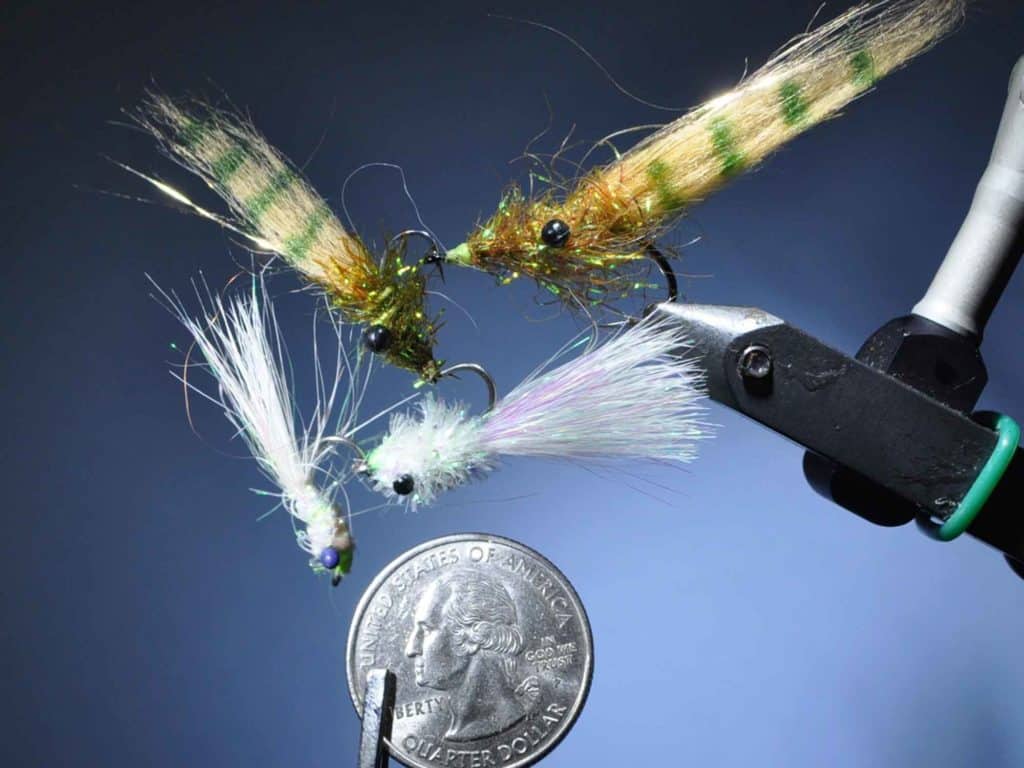On a recent evening charter trip, the food chain was rockin’. Using the electric motor, we eased within casting distance of a dim amber dock light with another light on the opposite corner. The tide was rushing past and tiny shrimp skipped across the surface. Then, one went airborne, and a nice snook crushed it the moment it landed back in the water.
A bigger eruption from a nicer snook under the other light soon followed, leaving a telltale foam ring as big as a manhole cover. My angler cast toward it, made a strip and he was on. Surprisingly, a good seatrout surfaced instead of a linesider, shaking its head violently before jumping clear out of the water three times. Unusual I thought, until a big shadow closed in. Just 10 feet from the boat, an 80-pound tarpon showed up. It didn’t get our trout, but it sure got our attention and proved that around the dock lights, it’s a dog-eat-dog world.
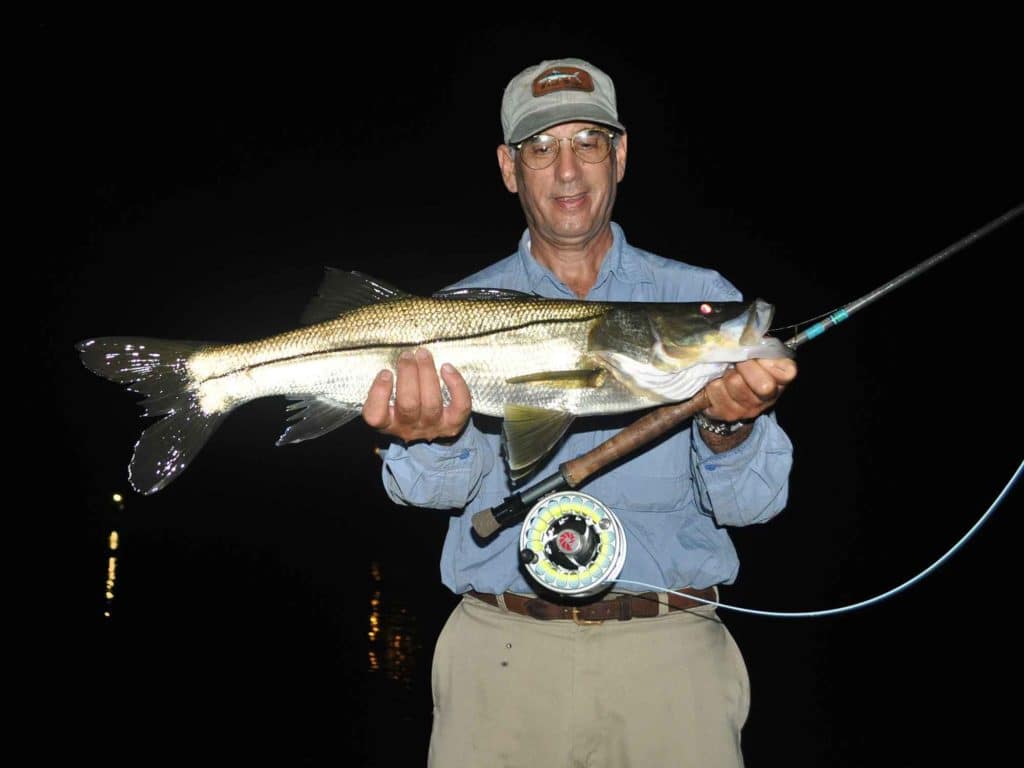
Dock lights are prime feeding stations for snook
DOCK-LIGHT TARGETS
In Florida, dock-light fishing is practiced year-round, though the action is best from spring through the fall. While spotted seatrout and redfish tolerate the chill quite well, winter winds and low water temps put a damper on the snook bite. From Texas to Alabama, fly fishers hit coastal bay docks for redfish, trout and flounder. In the Northeast, fly-rodders know dock lights draw striped bass, weakfish and, depending on the location, bluefish.
In Miami’s north Biscayne Bay, tarpon of eye-popping size also frequent dock lights. Hands down, the most exciting after-dark outing I ever had was one early winter’s night there, when Capt. Bob Lemay and I found 40- to 70-pounders hovering a particular set of lights. It was quite impressive to watch those fish follow and eat the flies we stripped across a few circles of iluminated water. Yet, just 80 miles to the north, back in my home waters on the St. Lucie River, ‘poons give way to snook almost entirely.
My weirdest dock-light trip? It was in San Antonio Bay, Texas, where redfish and trout were sipping moths on the surface. That’s right, moths! You just never know…
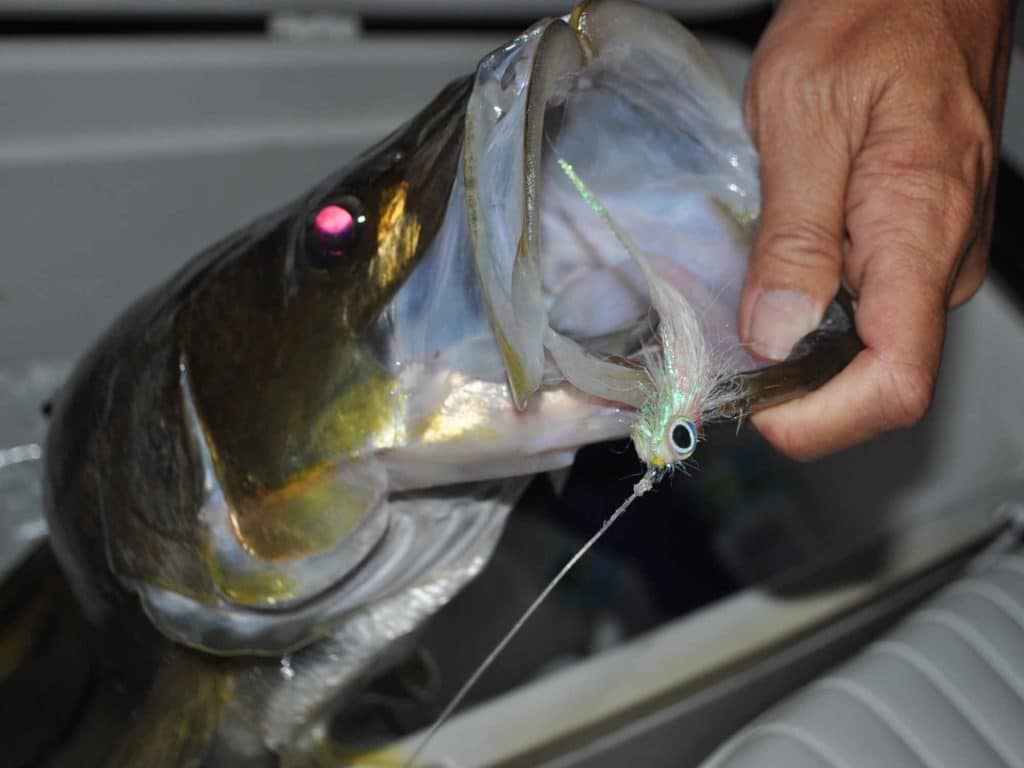
SMALL AND FLASHY
TOP DOCKS
Generally, the best docks have good tidal current that delivers prey to the fish waiting in ambush at the edge of darkness. Docks with just a light or two and little foot and boat traffic can be dynamite. They tend to draw more fish from darker, surrounding waters. Too much light seems to scatter the fish.
The type of light also matters. While they all attract fish, overhead incandescent lights close to the water just seem to draw more shrimp and baitfish — and predators that feed on them — than the newer green LED (sometimes called high intensity discharge) underwater lights. The old-fashion yellow bulbs above the surface also show silhouettes better than underwater lights, which often allow fish to get too good a look at your fly.
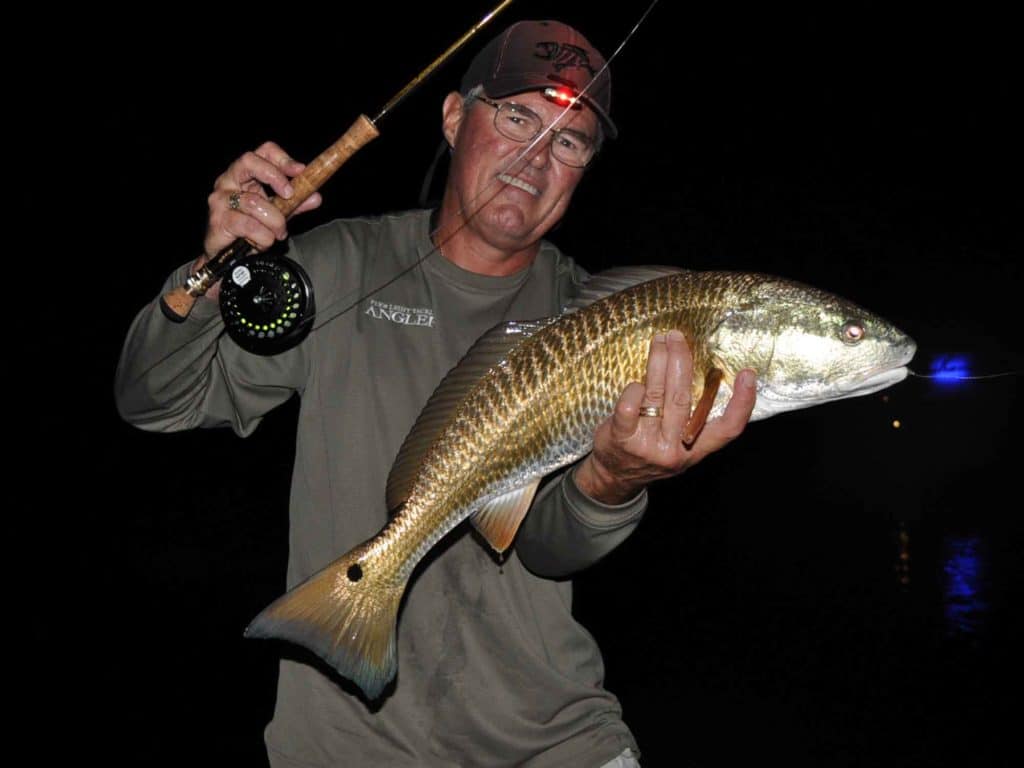
REDFISH AFTER DARK
THE FOOD
Prey gathering around dock lights varies. Baitfish runs mean schooling minnows (juvenile bay anchovies are typical), finger mullet, scaled sardines and more. Shrimp of many kinds are common, and tiny crabs often make up the rest of the mix. As for flies, mimic the size and profile of the bait primarily, the coloration comes second. When the prevalent prey is under two inches long, fly fishers have the edge over spinning and baitcasting anglers tossing hard-body and soft-plastic lures.
There are many excellent fly patterns to choose from. Most baitfish flies for dock-light duty are white; shrimp patterns are typically brown, but white sure works, too. Hook size ranges from as small as No. 8 to No. 1. In east central Florida, where I fish most, I favor flies tied on No. 4 hooks. But it pays to carry bigger flies on nights when the fish rally for small mullet or full-sized scaled sardines, for example. Weed guards can prevent losing flies to wooden dock boards and pilings, and I like to pinch the hook barb a bit, leaving only a bump that holds just fine.
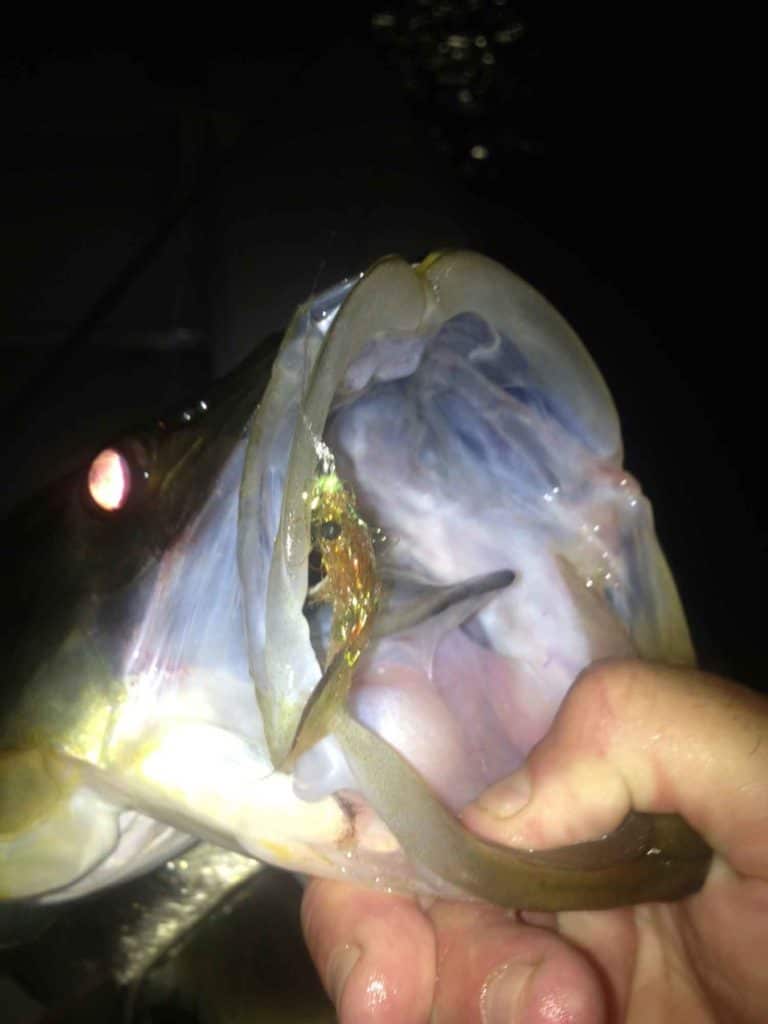
SHRIMP COCKTAIL
TACKLE TALK
Match your tackle to the fish primarily, and take into consideration that you are trying to wrestle a tough customer away from structure. I don’t fish anything lighter than an 8-weight. What’s the point? I want to land them—not leave leaders and flies stuck in dock posts and fish jaws. I break out a 9-weight when the fish are on the big side. I like short rods for docks, 8-footers on average, but 9-footers are fine. Short rods help tighten loops to get under the cover. I use floating lines primarily, though may fish an intermediate sinking line if the fish are sulking deeper. When they are too deep, I’d rather head for a bridge and dredge for the big ‘un.
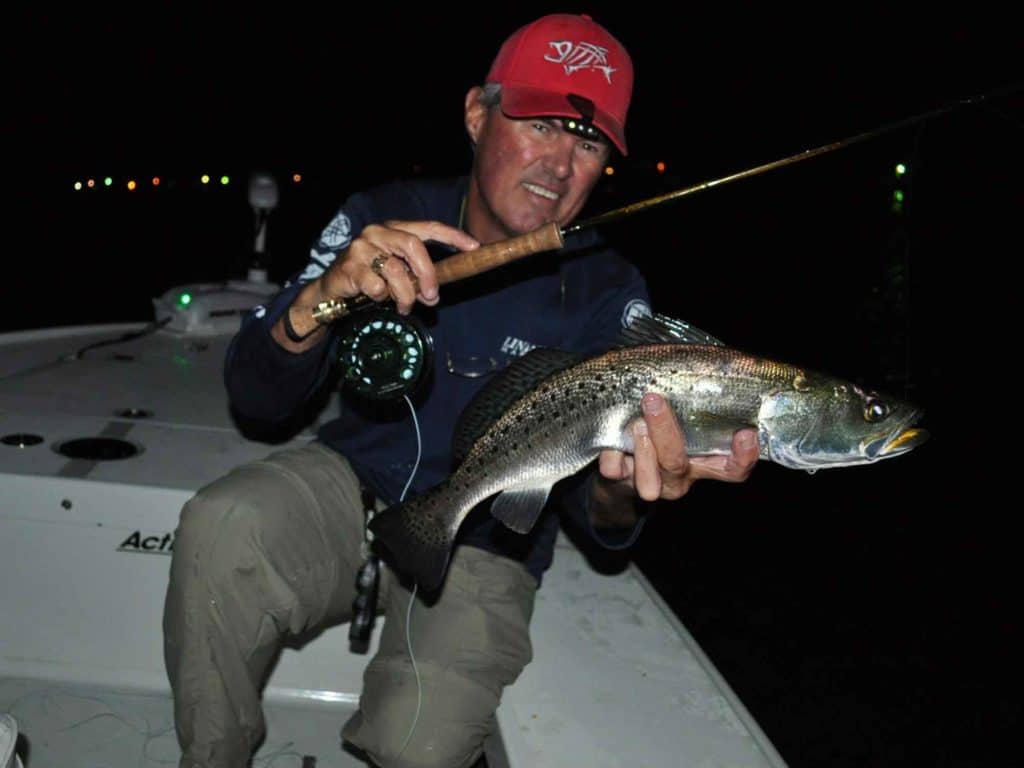
DOCK LIGHT TROUT
APPROACH AND PRESENTATION
Don’t rush up to a dock and throw the anchor, stealth is paramount. WIth that in mind, also refrain from slamming hatch covers, blasting your stereo, or yacking too loudly. Not only will that slow or halt the bite, the homeowner may kill the dock lights, then the game is over.
It’s best to drift into position and quietly slip the anchor over the side. Or better yet, use an electric motor to approach and hold position in the current. Where shallow enough, I deploy my Power-Pole. As a rule, if I don’t spot fish in the light, I cast my fly on the dark outer edge of a light’s halo. If I don’t get a bite, I cast a bit closer. But when fish are visible, I cast upcurrent of the target and let the current swing my fly to the fish in a natural manner. Some nights, they are blasting baits and you can “bean” them and still get a bite. Howevere, that’s not typical. The best retrieve is the one fish like. Seriously, watch the fish react to your fly and adjust accordingly. Stubborn fish? Make ‘em chase the fly down. If that fails, consider a change in fly size or color.
